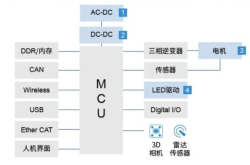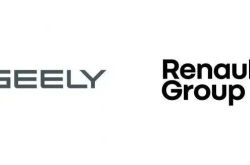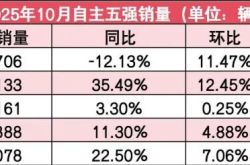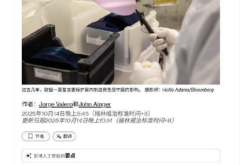"Protracted War Theory" of AI by Google and Baidu
![]() 05/26 2025
05/26 2025
![]() 699
699

AI competition is not a blitzkrieg but a protracted war. Blitzkrieg demands tactical singularity, whereas a protracted war necessitates long-term strategic planning.
By She Zongming
During World War II, German General Heinz Guderian introduced the blitzkrieg tactic. Emphasizing speed, blitzkrieg aims for quick, precise, and ruthless strikes, prioritizing instant explosive power. It typically seeks rapid victory through swift offensive maneuvers and intense rhythms.
Nazi Germany relied on blitzkrieg to conquer territories until encountering the Maginot Line.
In contrast to blitzkrieg's emphasis on speed, protracted war strategies focus on stability.
During the Anti-Japanese War, how did China endure? Part of the answer lies in "On Protracted War".
Protracted war emphasizes depth, stability, and duration, valuing long-term offensive and defensive capabilities. It often requires solid foundations and resilience, stabilizing rear areas and supply lines, trading time for space, and seeking victory through steady progress.
At that time, China relied on protracted war to gradually deplete the enemy, eventually turning the tide.
Now, it seems AI warfare has shifted from "speed" to "depth".
On May 21, at Google's 2025 annual I/O Developer Conference, Google unveiled over a dozen "new products" simultaneously, including Gemini 2.5 Pro, the most powerful general model in Google's history, AI Mode, an AI search tool, AR glasses Project Aura, MR headset Project Moohan, experimental AI agent tools Project Marine and Project Astra, among others.
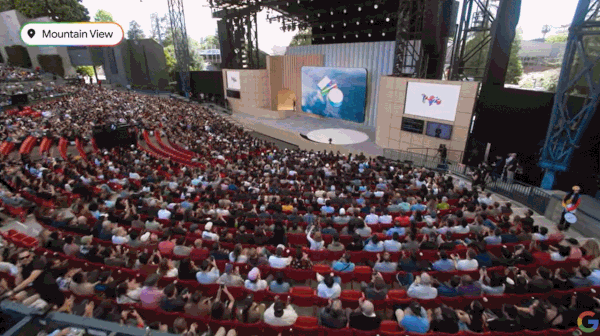
▲This year's Google I/O Conference garnered significant industry attention.
Its flurry of announcements brought a series of surprises, driving the conference to unprecedented popularity and acclaim.
Similarly, at the recent Create2025 Baidu AI Developer Conference, Baidu also seemed like Doraemon, pulling out a bunch of magical gadgets from its four-dimensional pocket: launching two models, Wenxin 4.5 Turbo and X1 Turbo, introducing highly convincing digital humans, a universal super agent Xinxiang, content operating system Cangzhou OS, and a 30,000-card computing power cluster...
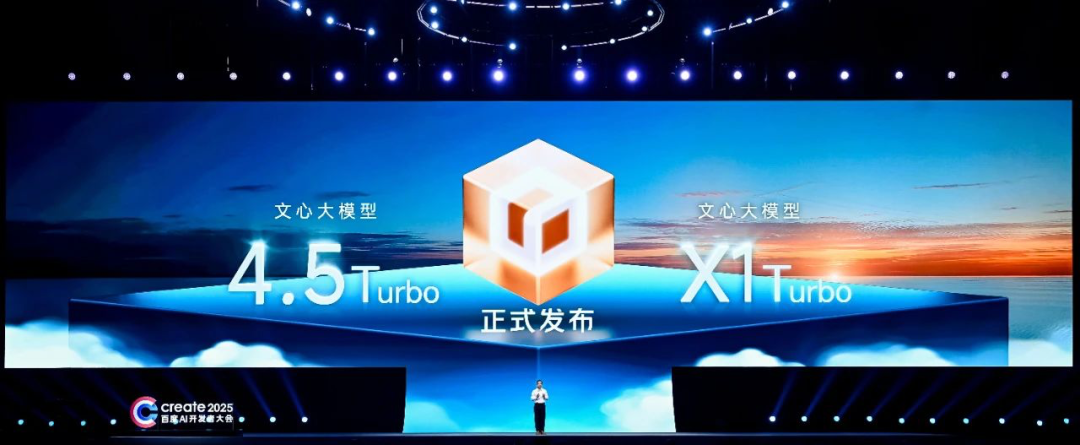
▲Wenxin 4.5 Turbo and X1 Turbo were unveiled at the conference.
At one point, many users joked, referencing a classic line from "Empresses in the Palace": "How many more surprises do you have that we don't know about?"
Both Google and Baidu have made significant moves, making the industry realize that as AI competition enters the "protracted war" stage, these two established players have regained their rhythm in their respective domains.
Over the years, as pioneers of "AI First" among Chinese and American tech companies, Google and Baidu have deployed full-stack layouts and invested heavily in the AI field.
These layouts and investments may have seemed "heavy" when large model vendors were accustomed to "light-mode entry" in the past two years, but when AI competition shifted to the "implementation" stage, they instead supported their "substance".
Summarizing with a popular online saying: "There is no wasted effort in deeply cultivating AI; every step counts."
01
This year marks the third year since the AI large model race intensified. After more than two years of technological leaps, it is evident that the entire AI industry is gradually shedding its initial impetuosity.
In the past two years, the global "model dance" and the domestic battle of hundreds of "models" became epitomes of the vigorous development of AI large models. The most mainstream AI product accompanying large models is undoubtedly the Chatbot (chat robot).
While Chatbots have indeed showcased the emerging shape of intelligence, they are ultimately just "chatting partners" and can hardly satisfy users' multifaceted needs deeply. After the novelty of the technology wears off and the industry enters a period of stock development, ChatBot products generally fall into a dilemma of "difficult user retention - difficult traffic pool expansion - difficult commercial conversion".
Coupled with poor product user stickiness, low traffic bottlenecks, and lack of commercial closed loops, AI enterprises that rely solely on model innovation gradually show signs of fatigue. Difficulty in establishing business models and slowing product release schedules have become their common characteristics.
This is not surprising: the development of the AI industry ultimately cannot escape the "gravitational pull" underlying Gartner's Hype Cycle for Emerging Technologies. As early as August last year, Gartner Vice President Arun actually issued a warning that Generative AI (GenAI) was about to surpass the Peak of Inflated Expectations.
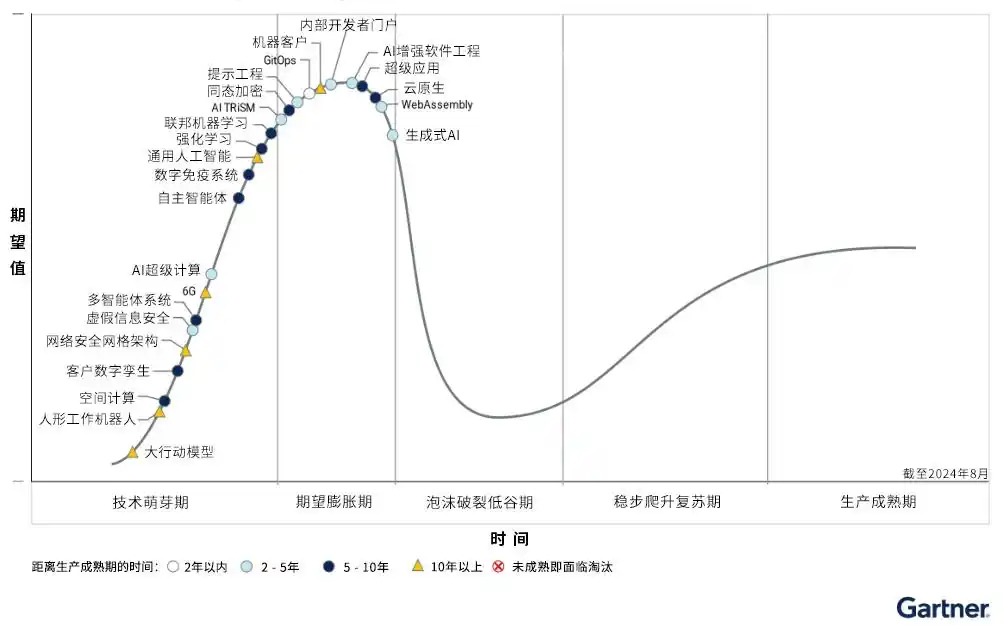
▲Gartner's Hype Cycle for Emerging Technologies 2024 released in August last year.
What is intriguing is that at this time, Google and Baidu, which have long "built high walls and accumulated abundant provisions" in the field of AI, are showing a strong momentum.
The hardcore new product releases and technological updates are the most intuitive evidence –
At this I/O Conference, Google held back a major announcement akin to saying, "Whose little eyes haven't looked over here yet?"
From Gemini 2.5 Pro and its Deep Think Ultra and Flash low-threshold versions, which dominated the charts upon release, to video generation model Veo 3 and image generation model Imagen 4; from 3D video communication platform Google Beam to multimodal AI assistant Project Astra; from AI film production tool Flow to programming assistance tools Jules and Stitch; from AR glasses to MR headsets... Google boasts both existing and new offerings.
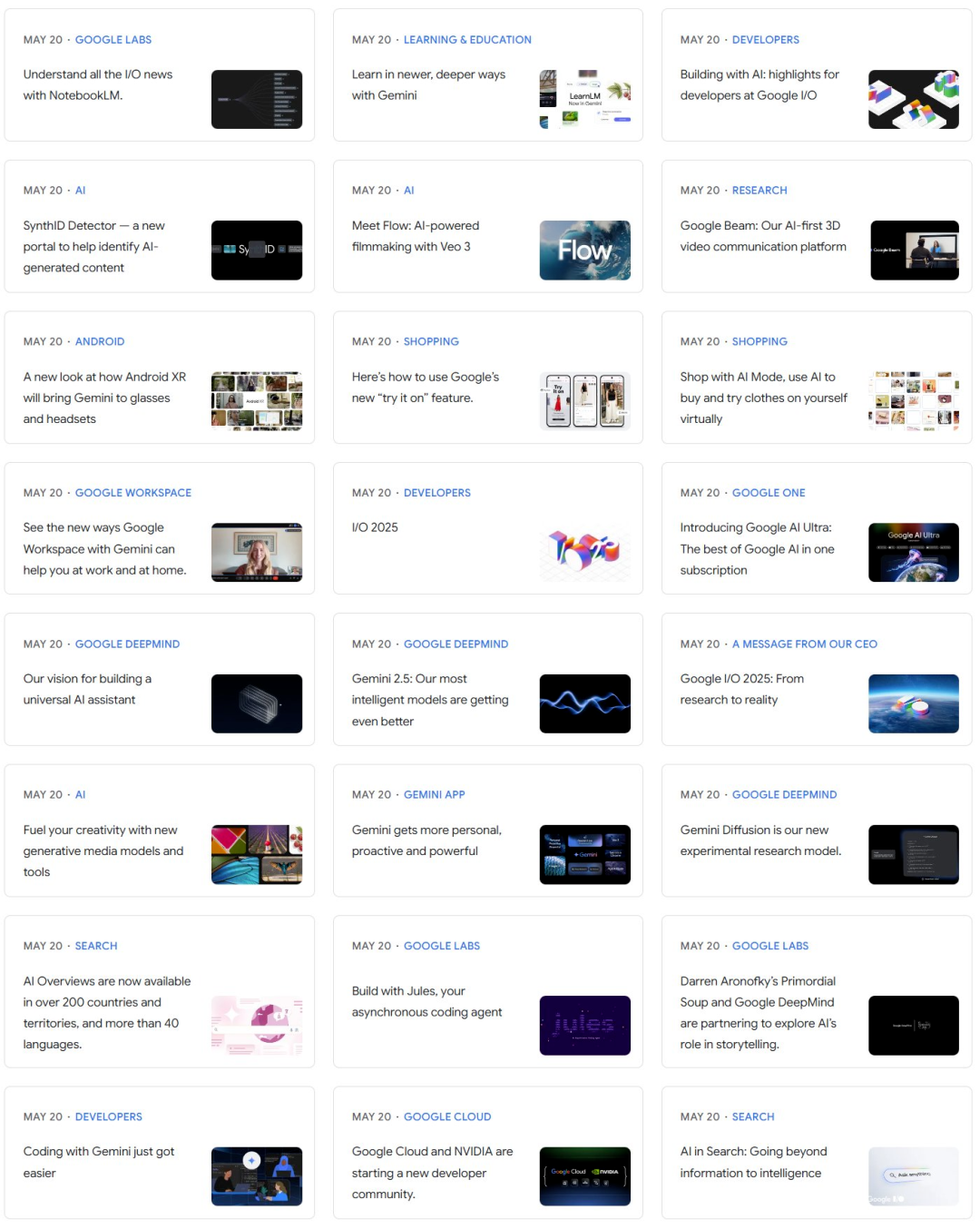
▲Google unleashed a "flurry of announcements".
At the recently concluded Baidu AI Developer Conference, Baidu also unleashed a flurry of new product announcements.
Two new models featuring multimodal, strong reasoning, and low-cost characteristics, China's first fully self-developed 30,000-card computing power cluster, highly convincing digital humans + Xinxiang APP + Cangzhou OS, three innovative applications based on PaddlePaddle, MCP server for e-commerce transactions and search, and China's first intelligent coding assistant Wenxin Kuama that supports MCP server... Baidu demonstrated its power of deep accumulation and strong delivery through a full-stack service system.
Among them, Wenxin 4.5 Turbo and X1 Turbo performed exceptionally well in multiple benchmark test sets such as C-Eval, CMMLU, MathVista, and Math500, comparable to DeepSeeK and GPT models. Wenxin X1 Turbo even achieved the highest comprehensive rating of "Level 4+" in the China Academy of Information and Communications Technology's large model reasoning ability evaluation, becoming the first large model in China to pass this evaluation.
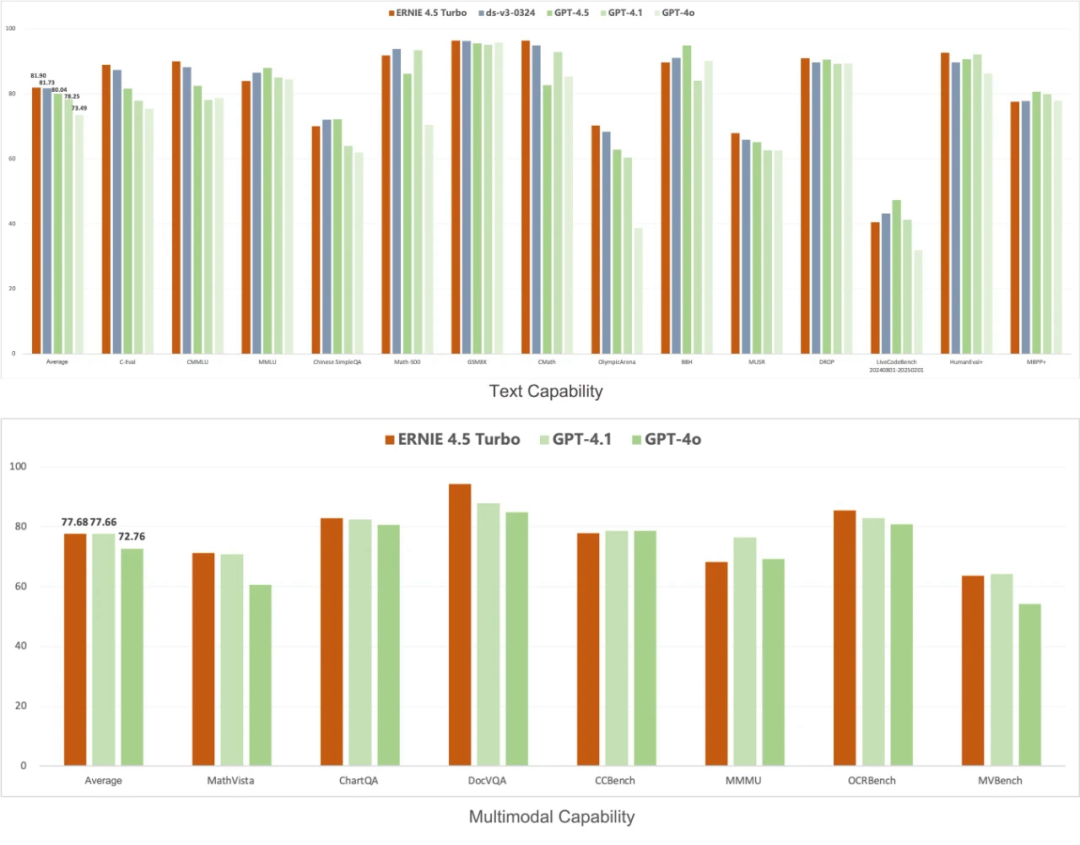
▲Wenxin 4.5 Turbo and X1 Turbo excel in many aspects.
This scene is unusual to many but normal from the perspective of technological development laws.
02
The strong momentum of Google and Baidu is not so much a comeback based on late-stage strength but rather the resilience supported by their early full-stack layouts.
You see, a year ago, Google, as the inventor of Transformer technology, was often the butt of jokes – its limelight was stolen by OpenAI, backed by Microsoft, and it was even surpassed by Anthropic, which Amazon had bet on, in some aspects.
Mistakes in Bard demonstrations, controversies over image generation, etc., raised questions: Does Google still have a chance to regain its leading position in AI competition?
But Google has shown with actions: Yes. At the Google Cloud Next '25 Conference more than a month ago, Google announced its "return of the king" with leading technological achievements and a clear corporate strategy.
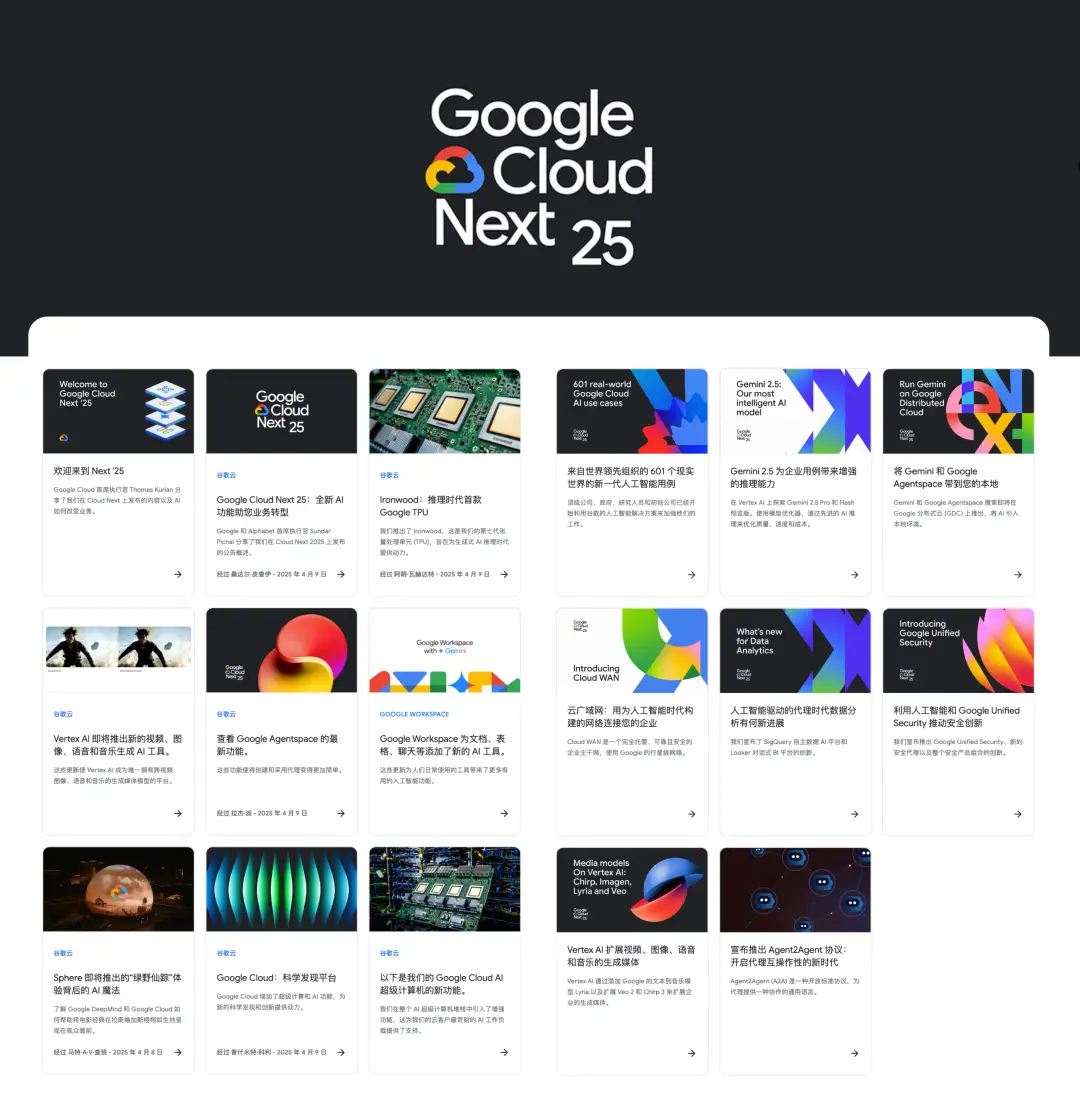
▲At the Google Cloud Next '25 Conference, Google showcased a clear AI strategy.
From the world's top TPU computing power infrastructure to the benchmark-leading new generation of multimodal model Gemini 2.5, to the enterprise-level AI platform Vertex AI with super growth potential, to the AI-driven global network service Cloud WAN, Google has completed an astonishing reversal from "catching up" to "being caught up to".
This I/O Conference, Google continued its sharp momentum by introducing new products ranging from models, AI assistants, universal agents, to AI hardware.
Baidu, which shares a strong search mindset with Google, has also delivered impressive results in AI: The Q1 2025 financial report showed that Baidu's revenue, profits, and smart cloud growth rates all exceeded market expectations, and its AI layout has yielded considerable returns.
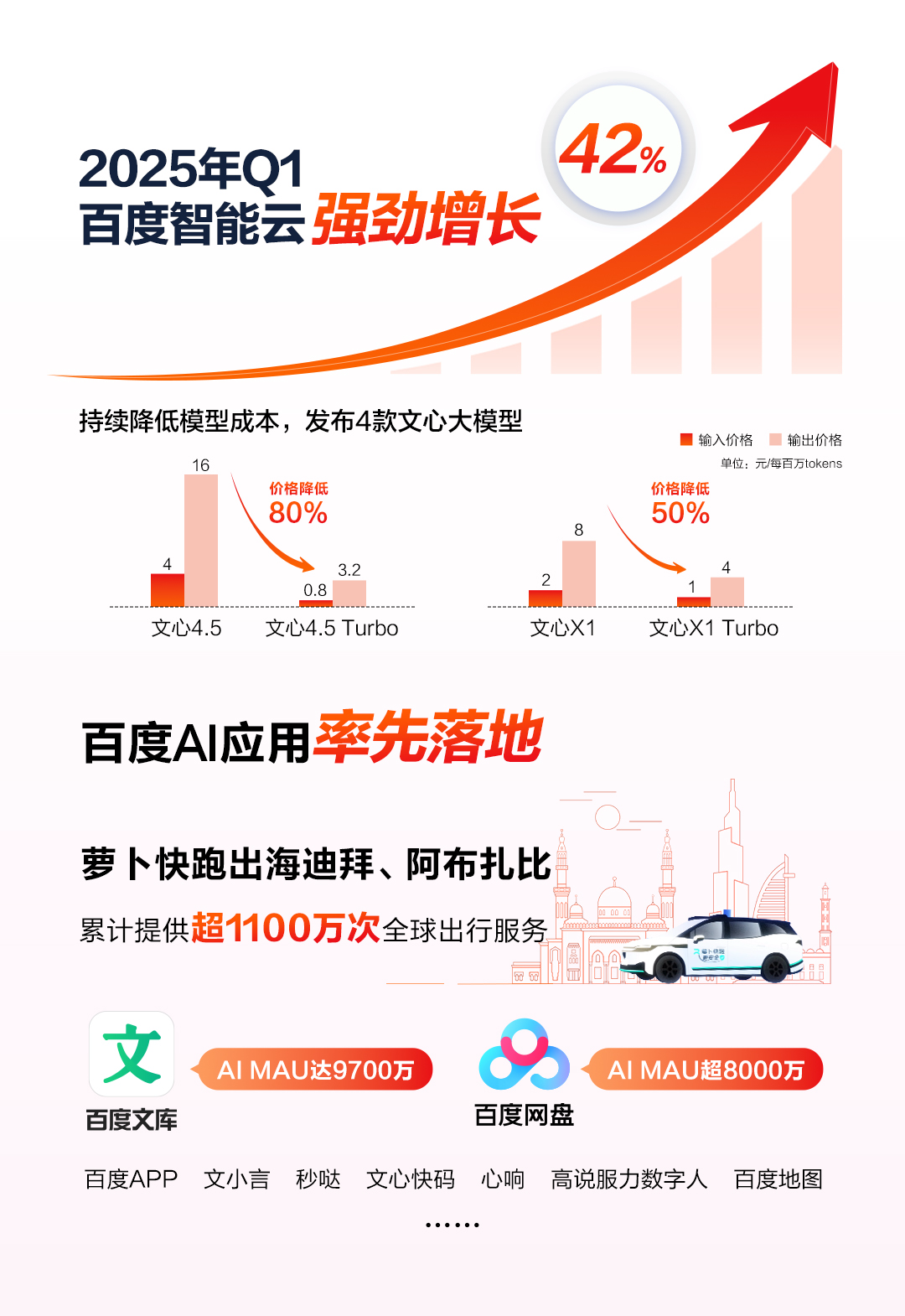
▲In Q1 2025, Baidu's AI performance was impressive.
Among them, the dual engines formed by "cloud + autonomous driving" for Baidu's AI applications were particularly eye-catching.
In the first quarter, Baidu's cloud business grew by 42%, AI-contributed revenue achieved triple-digit growth, and operating profit margin exceeded 10%.
In tenders for large model platforms and application markets, Baidu Intelligent Cloud ranked first in both the number and value of winning projects among general large model vendors.
Luobo Kuaipao's global travel service exceeded 11 million trips, with 1,000 deployed vehicles – the fully internationalized Luobo Kuaipao has reached Dubai and Abu Dhabi, with landings in Turkey and Switzerland imminent.
In early April, Luobo Kuaipao also won the prestigious Edison Award for "Driverless Vehicles" in the global technology innovation field, marking the first time a Chinese autonomous driving company has received this honor. The renowned business magazine Fast Company also praised Luobo Kuaipao: "Its performance has surpassed Google's Waymo self-driving cars."
The market has also responded. So far this year, multiple investment banks have aggressively bought Baidu shares: "Cathie Wood," the female Warren Buffett, has increased her holdings in Baidu six times in a month and a half, doubling her position; famous funds such as Bridgewater and Fidelity have also increased their holdings of Baidu shares by tenfold.
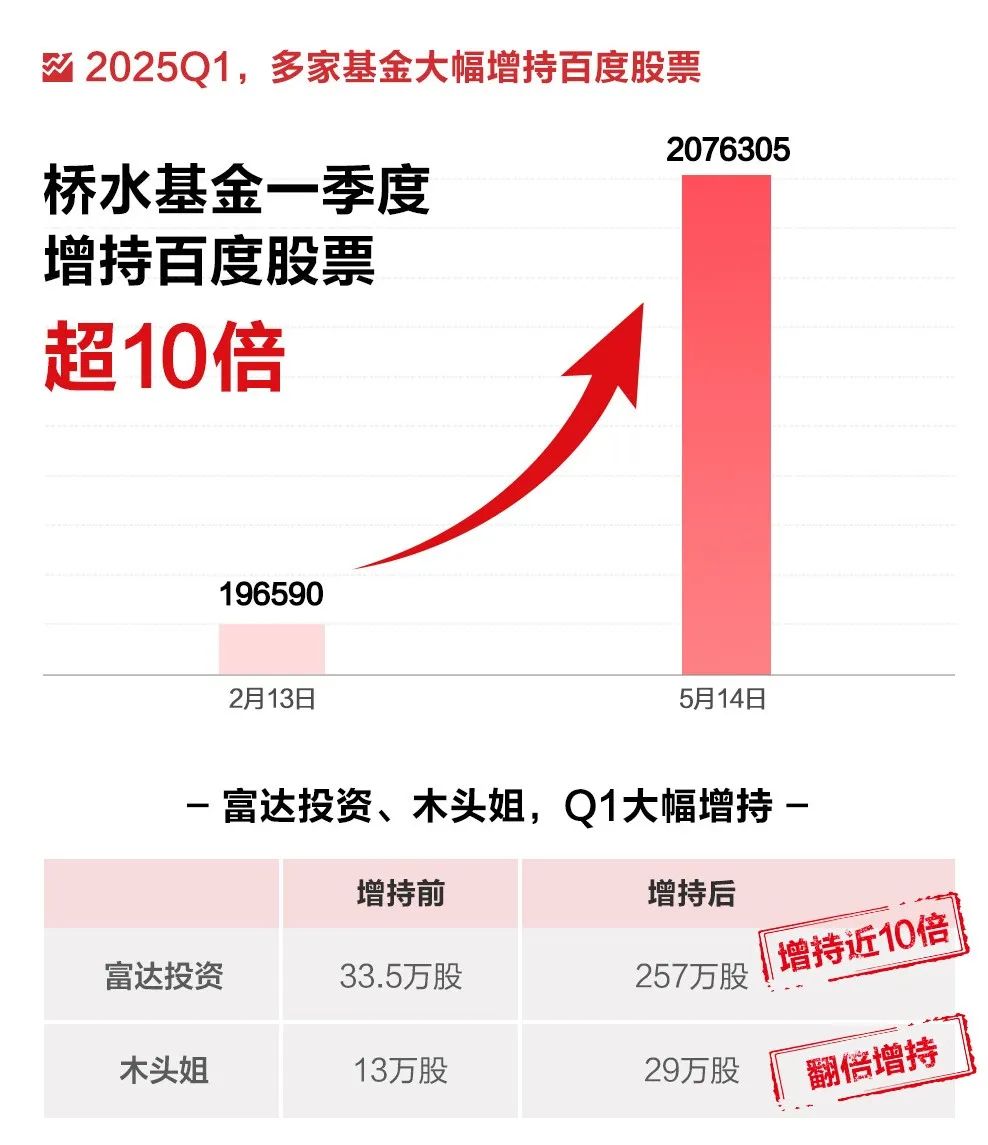
▲In the first quarter, multiple investment banks significantly increased their holdings of Baidu.
This undoubtedly casts a vote of confidence in AI's potential to drive up Baidu's valuation center and presses the approval button for Baidu's new AI narrative supported by "cloud + autonomous driving".
03
The question arises: Why can Google and Baidu follow an upward trend against the backdrop of industry restructuring?
The key reason lies in their strategic depth formed through full-stack layouts.
In TMT terminology, they have built deep moats.
Today, more and more people are clearly aware that AI competition is a marathon rather than a 100-meter sprint.
Since AI competition is a marathon, it is not just about instantaneous explosive power but solid physical fitness and enduring stamina. Long-term stability is more important than short-term speed.
The "past paths" of Google and Baidu confirm this point.
Currently, many AI enterprises seek breakthroughs in single points, but they have been focusing on building systematic capabilities covering "basic research - application development - scenario implementation - ecosystem construction" from an early stage.
About two years ago, Robin Li said, "As humanity enters the era of artificial intelligence, the technology stack of IT technology has undergone fundamental changes. In the past, it was basically divided into three layers: chip layer, operating system layer, and application layer. Now it can be divided into four layers: chip layer, framework layer, model layer, and application layer." Google and Baidu have been laying out in these areas for a long time.
Why could Google unveil new products at such a fast pace at this I/O Conference? Because it has built a "smooth road network" and created "high-speed transportation tools": TPU chip computing power support + cloud service integration of the Vertex AI platform + Gemini series models + Transformer framework + AI-enabled search products + AI browsers and office suites + toolchain support, etc.
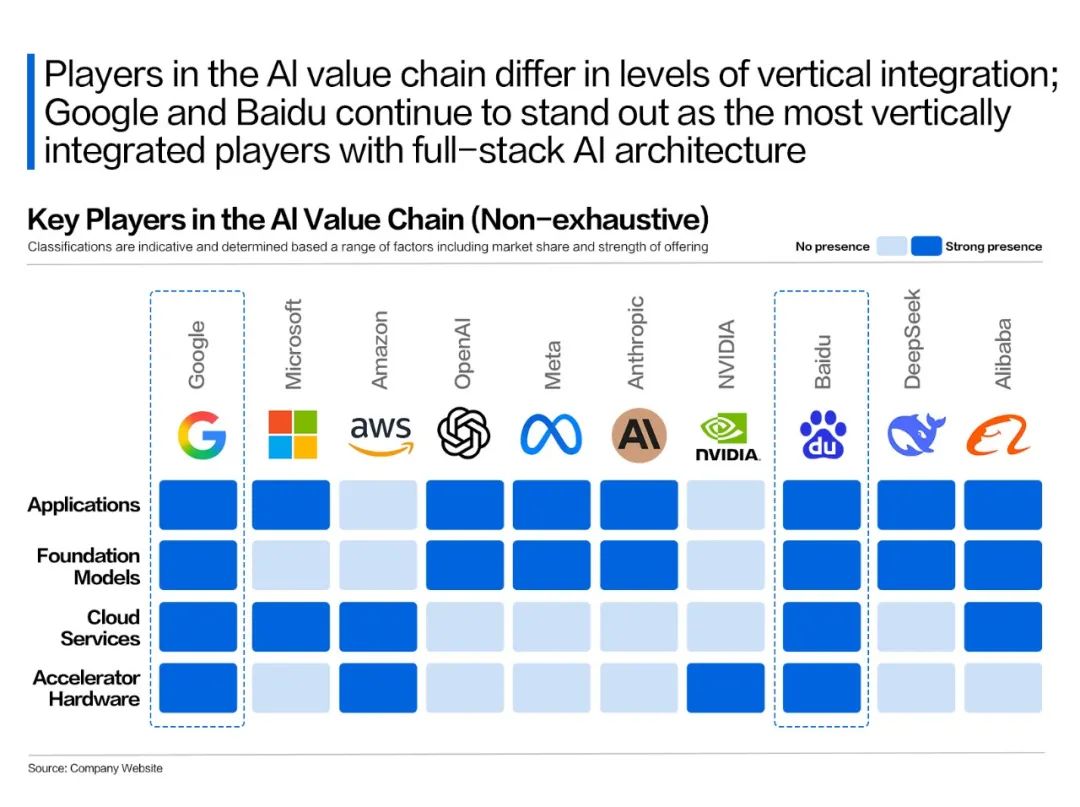
▲Google and Baidu are among the few global tech companies with full-stack layouts in AI.
Therefore, JPMorgan Chase stated that Google adopts a full-stack AI approach, possessing world-class research, custom AI hardware, robust global infrastructure, leading foundational models, and developer tools/platforms, which give Google's foundational models an edge in efficiency and cost.
Baidu is no exception. Robin Li previously said, "Baidu is one of the few AI companies in the world with a full-stack layout, ranging from Kunlun, a high-end chip, to PaddlePaddle, a deep learning framework, to ERNIE Bot, a pre-trained large model. We have leading self-developed technologies at all levels that can achieve end-to-end optimization and significantly improve efficiency."
This was recognized by Time magazine. When it included Baidu in the "100 Most Influential Companies in the World 2024" list, it commented that "Baidu is one of the few companies in the world that has achieved a full-stack layout in AI."
Baidu Intelligent Cloud and Robobus have emerged as benchmark AI applications, underpinned by Kunlun at the chip level, PaddlePaddle at the framework level, and ERNIE Bot at the model level. Robin Li attributed the robust performance of the intelligent cloud business to the growing market recognition of Baidu's "cost-effective, full-stack AI products and solutions".
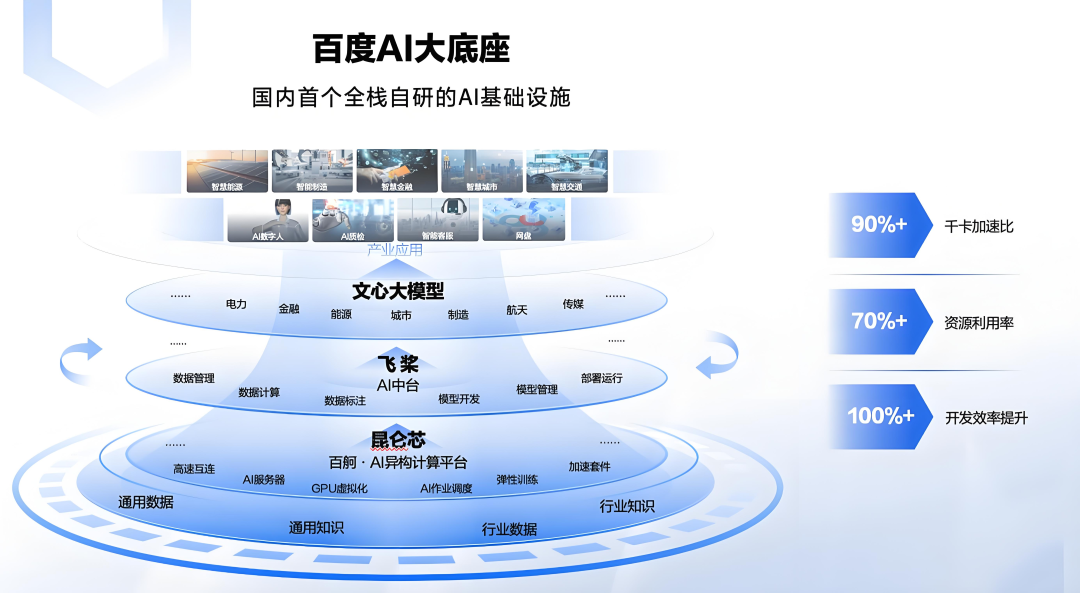
▲Baidu has laid a solid foundation for AI technology through full-stack self-development.
In mid-May, Baidu and Alibaba were the only two Chinese companies included in Wedbush's list of "30 Global Tech Companies Defining the Future of AI." Bloomberg recently revealed that Apple AI will introduce new functions in mainland China for the first time in iOS 18.6, deeply embedding ERNIE Bot as the cloud intelligence engine for the Chinese version. These selections reflect the recognition of Baidu's accumulated capabilities across the four-tier AI architecture technology stack.
04
The full-stack layout has solidified the rear base for Google and Baidu in the enduring battle of AI.
From the perspective of AI development, the core competitiveness of the full-stack layout lies in its ability to connect the feedback loops between AI infrastructure, frameworks, cloud services, large models, and application ecosystems, leveraging synergies to drive a positive reinforcement cycle.
Project Astra, Google's AI glasses launched at the I/O conference, exemplifies this: it's not just a hardware innovation but a terminal breakthrough deeply integrating the Gemini model, AR display, and Google's service ecosystem.
Similarly, the Robobus's global leadership in the autonomous driving race is due to the "hexagonal warrior" constitution supported by the full-stack layout.
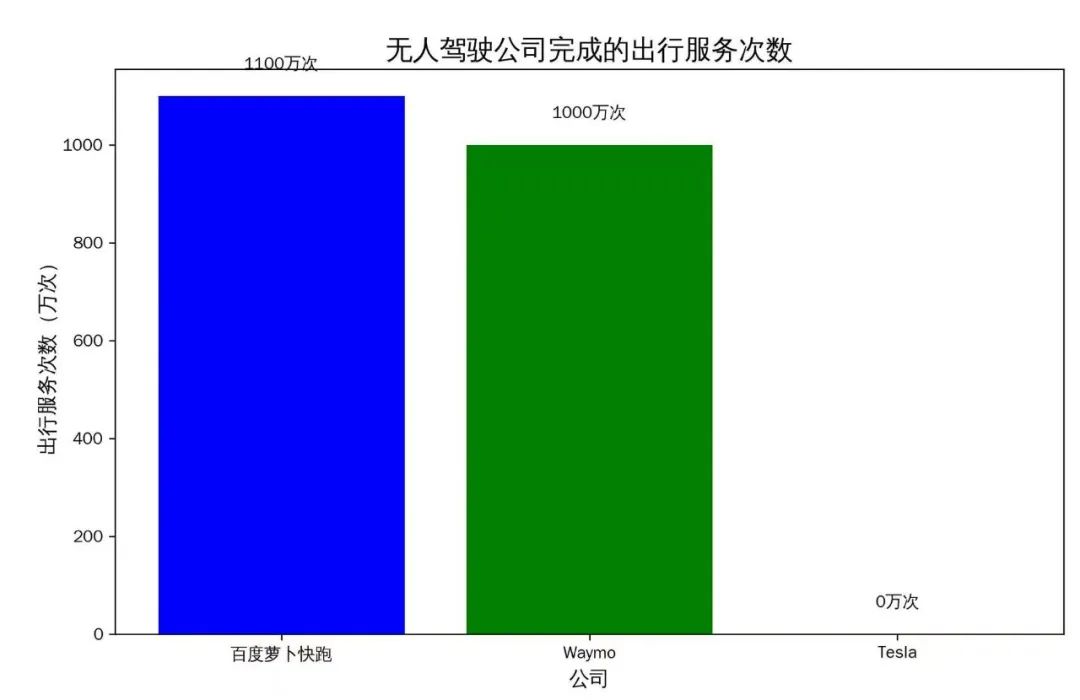
▲Robobus has completed over 11 million ride-hailing services.
A full-stack layout facilitates a technical closed loop, enhancing iteration efficiency. Baidu's Baihe AI Heterogeneous Computing Platform 4.0 and PaddlePaddle's automatic mixed-precision training technology significantly boost model training efficiency and reduce costs. Google's TPU chips and JAX framework also improve the training efficiency of Gemini 1.5 Pro and reduce costs.
Furthermore, a full-stack layout enables a business closed loop, creating synergies. Rich application scenarios provide data feedback for technology iteration, while enhanced technical capabilities support application implementation. When Google integrates AI capabilities into core products like search, maps, and Android systems, and Baidu embeds full-stack AI solutions into hundreds of industry scenarios of intelligent cloud services, the technological value exponentially amplifies through existing commercial networks, expanding commercialization space.
Therefore, looking ahead, a full-stack service system is the optimal solution for AI implementation and the deciding factor in AI enterprise competition.
Put simply, full-stack capabilities mean better technological synergy and ecosystem control, making AI services cheaper, faster, and more adaptable to scenarios, smoothing AI application implementation.
Baidu Intelligent Cloud's Qianfan large model platform provides access to hundreds of mainstream large models globally, with highly cost-effective calling prices. It has helped customers fine-tune 33,000 models and develop 770,000 enterprise applications, a testament to its capabilities.
Only large-scale AI implementation can unleash its exponential value.
05
Building a comprehensive technology chain from bottom to top is no easy feat. Significant investment is essential for a full-stack layout.
Such heavy investment may seem "clumsy" when the ROI model is not fully verified. However, often, the "technology tree" nurtured years ago will later flourish, providing shade and benefits.
The saying "cultivate its roots and wait for its fruits, add its fat and hope for its light. The more luxuriant the roots, the more abundant the fruits; the more fertile the fat, the brighter the light" encapsulates this principle.
Time has proven that a full-stack layout in AI is a "difficult but correct" endeavor. While it may not accelerate enterprises in the short term, it ensures long-term sustainability.
The AI advancement paths of Google and Baidu confirm this: in the AI marathon, deep cultivation and accumulation require persistence, but the accumulated technological heritage and honed innovative endurance will eventually become long-term advantages.
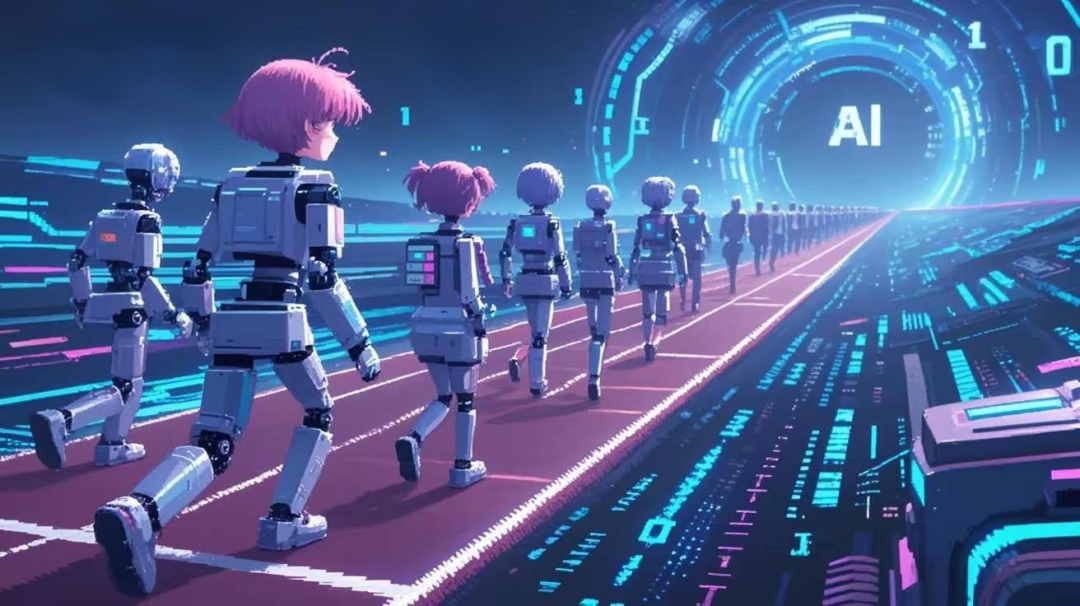
▲In the AI marathon, long-term stability trumps short-term speed.
Compared to OpenAI, constrained by the computing power supply chain, and Microsoft, facing conflicts of interest between OpenAI and self-developed models, Google can re-establish its leadership with full process autonomy and control from "chip design (TPU) - model development (DeepMind) - global deployment (Google Cloud) - industry applications (Workspace, Search)."
As enterprises purely pursuing the model route show sluggish growth, Baidu has forged its own path in boosting China's industrial digitization with its vertical integration capabilities of "self-developed computing power + PaddlePaddle framework + ERNIE Bot + application matrix." As the positive reinforcement loop, from underlying computing power to industry know-how, sinks into various scenarios like industrial manufacturing and smart cities, Baidu's previous technological accumulation is being realized as the driving force for development.
Ultimately, the long-term competitive barriers built by Google and Baidu through full-stack layouts offer insights for the AI industry – in today's escalating AI competition, AI enterprises should uphold long-termism and build systematic capabilities. "Infrastructure with thickness, technology with depth, scenarios with breadth, and ecosystem with vitality" are often the keys to walking more steadily, longer, and farther.
After all, AI competition is a protracted battle rather than a blitzkrieg – while blitzkrieg demands tactical singularity, protracted battles require strategic long-term deployments.

